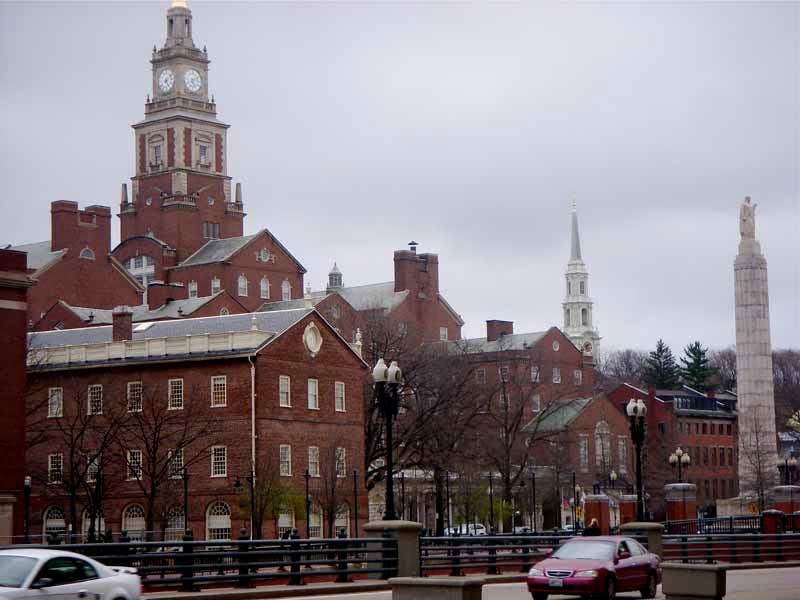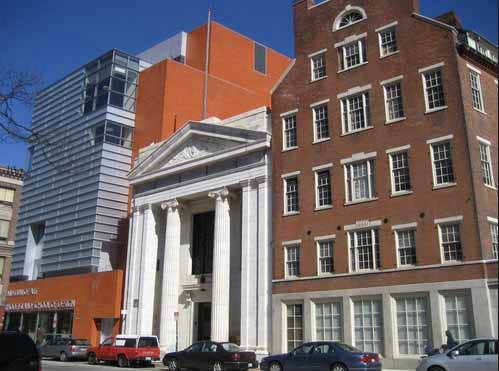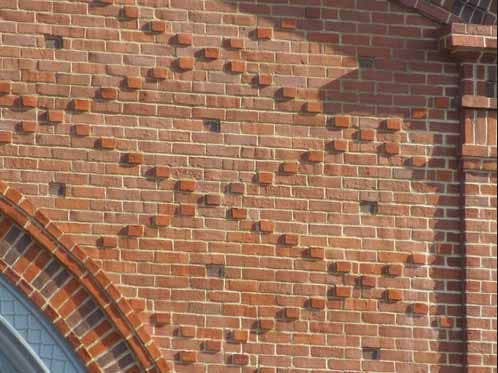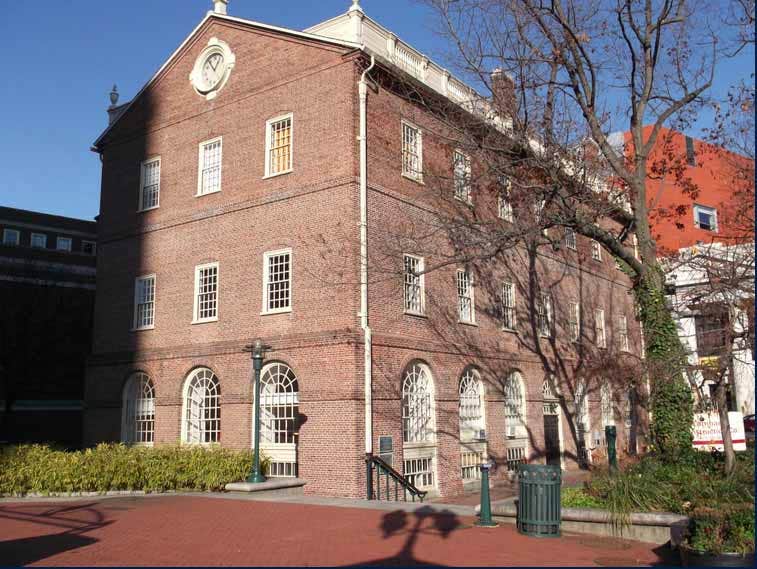
David Brussat
Providence’s Long Love Affair with Brick
The building material of the future.





Brick often finds itself in the dog house.
Long ago in Providence, architectural historian and local preservation heroine Antoinette Downing, sitting on the design review panel of the Capital Center Commission, is said to have sniggered at one of the oldest and most distinguished building materials in the history of architecture.
In an interview by The Journal’s John Castellucci on Feb. 26, 1996, fellow panel member and Rhode Island School of Design architecture professor Derek Bradford described Downing as having whispered to him, “If I see another red brick building, I think I’ll be sick.”
Downing’s disdain for red brick strikes me as akin to the supposed disdain of the postwar American public for aging Victorian architecture. It was disliked by modern architects, who in their egoism now claim the world agreed.
Recently, a documentary called The Human Scale, about how Danish architect Jan Gehl seeks to fix “broken” public spaces, was screened in Providence. One scene showed a fence around a site where earthquake-ravaged Christchurch, N.Z., was to be rebuilt. Someone had scrawled, “No more brick buildings!”
Surely this was penned by a modern architect or one of his or her camp followers. The film seemed to forget that modern architecture’s lack of human scale is why public spaces amid modern buildings need fixing. One easy cure would be to stop surrounding public spaces with buildings of glass and steel.
Let Brick be Brick!
A subset of that cure would be to let brick out of the dog house. Let brick be brick!
Amid their long disdain for masonry, even modernist architects can hardly avoid its use; they just use it badly. Witness the plain brick wall of the RISD Museum’s 2008 addition in Providence. Architect Rafael Moneo was not content to put up a plain brick wall; he had to give it an orangey color out of character on North Main Street.
A block farther north is RISD’s just completed addition to its Illustration Studies Building (built in 1848). Its glass curtain wall is joined by a stretch of red brick that seems to exist so that RISD can claim, absurdly, that the addition fits into its historical context. Brick is often forced to express this kind of dishonesty. Modern architecture likes to imagine itself a paragon of honesty in design. Do not believe it.
The mechanisms established by orthodoxy to cover up such dishonesty are exemplified by the Human Scale documentary, straining to avoid taking note of the obvious solution to the problem it addresses. Even the sainted Antoinette Downing apparently felt obliged to let on (in a whisper, of course) that she had drunk the modernist Kool Aid. But I doubt she appreciated the emperor’s new clothes.
Uses and Traits of Brick
Brick, rectangular in shape and ranging in color from tan to red (a broad palette that includes yellow, brown and even orange), is the most versatile of building materials. Brick of a given color can be produced in a slate of shades that turns its unity into a symphony.
Brick may be set at angles, course on course, or by popping its ends out an inch or so in any number of patterns to enliven a wall. A diaper pattern, for example, graces Brown University’s new Jonathan Nelson Fitness Center. The brick toolbox offers an infinity of alternatives. Whether in its basic format or enhanced by the many motifs available to the creative alignment of its simple shape, brick heightens the role of scale in the delight of architecture.
More than any other building material, the brick rectangle plugs automatically into the variety of scales that human sensibilities seek instinctively. This is the key to good architecture, and the key to why good modern architecture is so rare. Modernism’s shiny corporate materials offer one scale only — large. That frustrates the need for organized complexity hard-wired into humans by their biological evolution. Gradations of scale offer visual interest of a sort that now stands in for information once required to survive.
Panelized brick systems do scale poorly, but they do it. Brick laid by hand is preferable. The plain brick wall of Market House (1773), where the colony of Rhode Island declared independence from Britain before any other colony, shows how the rough imperfections of historic brick bring an even smaller scale to the pattern of a building, beckoning a closeness that hints at romance. (You can see the orangey brick of the Moneo addition in the background.) The view of College Hill anchored by the Providence County Courthouse (1930) is a Georgian concerto of brick comparable in allure to any in the world.
Despite the sophistication claimed by its advocates, modern architecture is big-box architecture. It is doomed to the dustbin of fashion by the slow architecture that is growing popular with the young in the wake of slow food and other back-to-basics movements.
In or out of the dog house, brick will not go away. So, brick by brick, let brick be brick. It is tradition. It is classic. It is, God willing, the architecture of the future.
For 30 years, David Brussat was on the editorial board of The Providence Journal, where he wrote unsigned editorials expressing the newspaper’s opinion on a wide range of topics, plus a weekly column of architecture criticism and commentary on cultural, design and economic development issues locally, nationally and globally. For a quarter of a century he was the only newspaper-based architecture critic in America championing new traditional work and denouncing modernist work. In 2009, he began writing a blog, Architecture Here and There. He was laid off when the Journal was sold in 2014, and his writing continues through his blog, which is now independent. In 2014 he also started a consultancy through which he writes and edits material for some of the architecture world’s most celebrated designers and theorists. In 2015, at the request of History Press, he wrote Lost Providence, which was published in 2017.
Brussat belongs to the Providence Preservation Society, the Rhode Island Historical Society, and the Institute of Classical Architecture & Art, where he is on the board of the New England chapter. He received an Arthur Ross Award from the ICAA in 2002, and he was recently named a Fellow of the Royal Society of the Arts. He was born in Chicago, grew up in the District of Columbia, and lives in Providence with his wife, Victoria, son Billy, and cat Gato.








